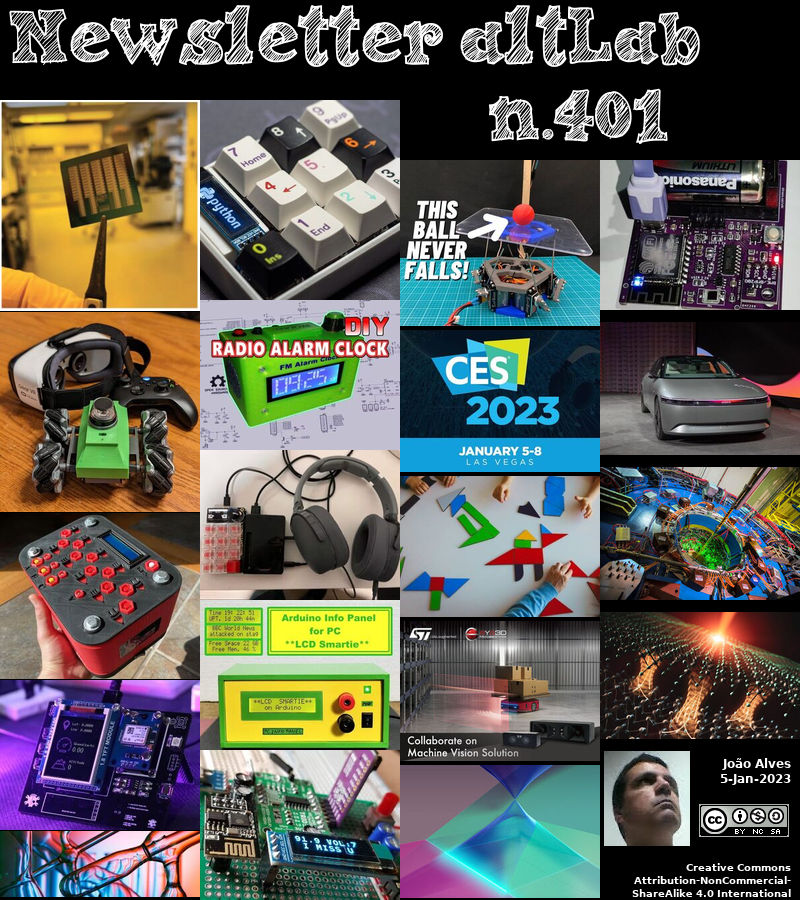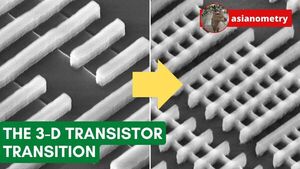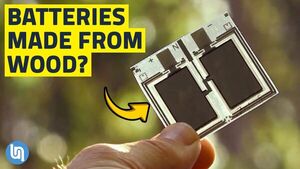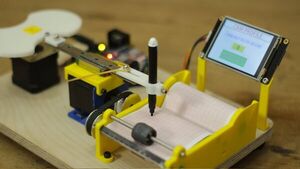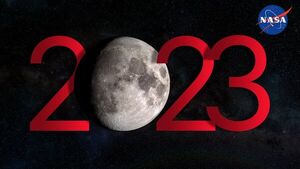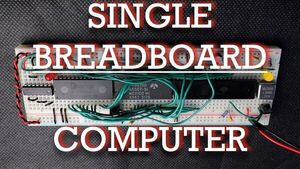2023-01-05 - Nº 401
Editorial
Esta é a Newsletter Nº 401 que se apresenta com o mesmo formato que as anteriores. Se gostar da Newsletter partilhe-a!
Todas as Newsletters encontram-se indexadas no link.
Esta Newsletter tem os seguintes tópicos:
Faz hoje anos que nascia, em 1771, o inventor e fabricante norte-americano David Wilkinson. Ele patenteou uma máquina de corte de roscas de parafuso que incorporou o suporte da lâmina (14 Dez 1798). Tinha um suporte pesado apoiado em três rolos. Com o seu pai e irmão, Wilkinson forneceu a indústria do algodão, maquinando, fundindo e forjando peças de ferro para construir equipamento de fabrico têxtil para fábricas como Slater Mill, Pawtucket, Rhode Island. Com este negócio para o manter ocupado, Wilkinson não desenvolveu mais a sua máquina de parafusos. O seu negócio falhou no pânico financeiro de 1829. No entanto, a invenção do slide-rest foi amplamente aplicada por outros, especialmente no fabrico de armas de fogo para o governo dos Estados Unidos. Em 1848, pediu ao Congresso uma recompensa financeira pela sua invenção e recebeu 10.000 dólares.
Faz também hoje anos que nascia, em 1838, o matemático e engenheiro francês Camille Jordan. Ele preparou uma base para a teoria de grupo e construiu sobre o trabalho anterior de Évariste Galois. Como matemático, os interesses de Jordan eram diversos, cobrindo tópicos ao longo dos aspectos da matemática em estudo na sua época. Os tópicos dos seus trabalhos publicados incluem grupos finitos, álgebra linear e multilinear, teoria dos números, topologia dos poliedros, equações diferenciais, e mecânica.
Faz igualmente hoje anos que nascia, em 1855, o inventor e fabricante norte-americano King C. Gillette. Ele inventou e fabricou a lâmina de barbear de segurança com lâminas descartáveis. Após esforços persistentes para inventar algo que todos usariam, em 1895 produziu uma versão em bruto de uma lâmina de barbear descartável. levou mais seis anos para refinar a sua invenção. A 15 de Novembro de 1904 foi-lhe concedida a patente norte-americana nº 775.134 pela sua ideia e fundou a Gillette Safety Razor Company em Boston, Mass., para fabricar a sua lâmina de barbear e as suas lâminas. Em 1903, vendeu 168 lâminas, mas no ano seguinte vendeu 90.000 lâminas de barbear e mais de 12 milhões de lâminas. Embora tenha permanecido presidente da empresa até 1931, retirou-se para Los Angeles em 1913, tendo-se tornado um milionário. Utópico, escreveu quatro livros que traduzem a sua experiência empresarial em teorias sociais, culminando com The People's Corporation (1924).
Por fim, faz hoje anos que nascia, em 1909, o matemático e lógico norte-americano Stephen Cole Kleene. Ele dedicou-se à pesquisa sobre a teoria dos algoritmos e funções recursivas. Desenvolveu o campo da teoria da recursividade com Church, Gödel, Turing e outros. Contribuiu para o Intuicionismo matemático que tinha sido fundado por Brouwer. O seu trabalho sobre a teoria da recursividade ajudou a fornecer os fundamentos da informática teórica. Ao fornecer métodos para determinar que problemas são solúveis, o trabalho de Kleene levou ao estudo de que funções podem ser computadas.
E começou hoje em Las Vegas a CES 2023, esta feira de novidades tecnológicas dá o pontapé de saída para as novidades que vão ser introduzidas ao longo deste ano. Juntando mais de 3200 expositores e mais de 4700 jornalistas nela estão já a ser apresentadas as principais novidades por parte dos grandes players tecnológicos actuais. Destes destaca-se a materialização de um projecto lançado na CES 2020 por parte da Sony com o seu prototipo Afeela, um veiculo eléctrico fruto de uma parceira com a Honda. É também de destacar a presença de diversos construtores automóveis que quiseram mostrar as suas principais novidades. Destes destacam-se a BMW e a Stellantis. No mundo mais tecnológico, a Qualcomm, a Samsung, a AMD e a Intel, apresentam novos produtos em diversas áreas. A Feira decorre entre hoje e o dia 9 de Janeiro em formato presencial e híbrido.
Na Newsletter desta semana apresentamos diversas noticias, artigos científicos, projetos de maker e alguns vídeos interessantes. É apresentado o livro "PCB Design Tutorial".
 João Alves ([email protected])
João Alves ([email protected])
O conteúdo da Newsletter encontra-se sob a licença  Creative Commons Attribution-NonCommercial-ShareAlike 4.0 International License.
Creative Commons Attribution-NonCommercial-ShareAlike 4.0 International License.
Novidades da Semana
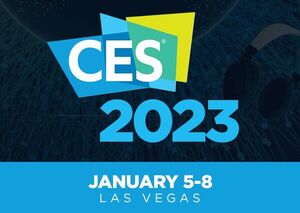
What Not to Miss at CES 2023
"CES®, the world’s most influential tech event, is back in Las Vegas on Jan. 5-8. With more to see than ever, the show footprint will be over 70 percent larger than CES 2022. For the first time, CES has a theme: how technology is addressing the world’s biggest challenges. The Consumer Technology Association® (CTA), in partnership with the United Nations Trust Fund for Human Security, will support the global campaign Human Security for All (HS4A). “CES is the world's most exciting technology event, from startups in Eureka Park to global brands on the main stages. We are thrilled to spotlight thousands of innovative companies at this year’s show,” said Gary Shapiro, president and CEO, CTA." [...]
Outras Notícias

Qualcomm Introduces Snapdragon Satellite, The World's First Satellite-Based Solution Capable of Supporting Two-Way Messaging for Premium Smartphones and Beyond
"At CES 2023, Qualcomm Technologies, Inc. announced Snapdragon Satellite — the world’s first satellite-based two-way capable messaging solution for premium smartphones. Snapdragon Satellite will provide global connectivity using mobile messaging from around the world1, starting with devices based on the flagship Snapdragon 8 Gen 2 Mobile Platform. Powered by Snapdragon 5G Modem-RF Systems and supported by the fully operational Iridium® satellite constellation, Snapdragon Satellite will enable OEMs and other service providers to offer truly global coverage. The solution for smartphones utilizes Iridium’s weather-resilient L-band spectrum for uplink and downlink. Emergency messaging on Snapdragon Satellite is planned to be available on next-generation smartphones, launched in select regions starting in the second half of 2023. “Robust and reliable connectivity is at the heart of premium experiences." [...]
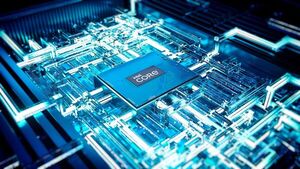
13th Gen Intel Core Processors
"At Intel Innovation in September 2022, Intel unveiled the 13th Gen Intel® Core™ processor family with the launch of the unlocked “K” desktop processors. The introduction includes the world’s fastest desktop processor: the 13th Gen Intel® Core™ i9-13900K. These processors continue to utilize Intel’s performance hybrid architecture to optimize gaming, content creation and productivity for enthusiast gamers and professional creators. In January 2023, Intel announced its 13th Gen Intel Core mobile processors that bring superior performance and experiences to mobile platforms. Intel introduced 32 new 13th Gen Intel Core mobile processors with a rich suite of features and capabilities for all laptop segments. During CES 2023, Intel showcases the new 13th Gen Intel Core mobile processor family." [...]

NXP Introduces Advanced Automotive Radar One-Chip Family for Next-Gen ADAS and Autonomous Driving Systems
" NXP Semiconductors (NASDAQ: NXPI), the market share leader in automotive radar according to Yole Intelligence, today announced a new industry-first 28nm RFCMOS radar one-chip IC family for next generation ADAS and autonomous driving systems. The new SAF85xx one-chip family combines NXP’s high performance radar sensing and processing technologies into a single device, offering tier ones and OEMs new flexibility in addressing short, medium and long range radar applications to serve ever more challenging NCAP safety requirements. The introduction of the one-chip radar family has added to NXP’s leading radar portfolio, built on more than 15 years of technology leadership and designed to surround drivers in a cocoon of safety to reduce accidents. DENSO Corporation, which works at the forefront of radar technology, has embraced NXP’s latest innovation as its lead customer. “This advanced radar sensing technology plays an essential part in accelerating the development of next-generation ADAS,” said Mr. Hiroshi Kondo, Head of Safety Systems Business Unit at DENSO Corporation. “We know DENSO will extend its leadership position in ADAS by leveraging NXP’s compact high-performance SAF85xx radar SoC.” NXP’s new family of automotive radar SoCs is comprised of high-performance radar transceivers integrated with multi-core radar processors which are built on NXP’s S32R radar compute platform." [...]
Nordic Semiconductor announces multi-function Power Management IC (PMIC) with unique system management features
"The latest addition to Nordic’s PMIC portfolio, the nPM1300 PMIC simplifies system design by integrating essential functions required for Bluetooth Low Energy embedded designs, while supporting longer run times and efficient battery charging Nordic Semiconductor today announces its plan to release a third Power Management IC (PMIC) in mid-2023 to expand its PMIC portfolio. The nPM1300 expands the company’s PMIC offering by adding support for both charging of larger batteries and four regulated power rails. The nPM1300 will be optimized for efficiency and compact size (3.1 x 2.4 mm WL-CSP or 5 x 5 mm QFN) and is digitally configurable through an I2C-compatible Two Wire Interface (TWI). The digital interface provides access to several system management functions that are usually implemented as discrete functions in Bluetooth® Low Energy (LE) embedded designs - such as hard reset, battery fuel gauge, system-level watchdog, power loss warning, and recovery from failed boot. “Nordic entered the PMIC market because existing power management solutions were not optimized for compact, ultra-low power IoT applications. Available PMICs leave it up to the designer to implement vital functionality using discrete components – functions that naturally belong inside a PMIC and can be implemented at almost no cost,” says Geir Kjosavik, Product Director – PMIC, Nordic Semiconductor." [...]

TI enables automakers to take full advantage of EV range with the industry's most accurate battery cell and pack monitors
"Texas Instruments (TI) (Nasdaq: TXN) today introduced new automotive battery cell and pack monitors with the most accurate measurement capability available on the market, maximizing electric vehicle (EV) drive time and enabling safer operation. As EVs grow in popularity, advanced battery management systems (BMS) are helping overcome critical barriers to widespread adoption. With a focus on solving complex system design challenges, TI provides the most advanced, comprehensive portfolio of BMS devices, enabling automakers to create a safer, more reliable driving experience and accelerate EV adoption. The BQ79718-Q1 battery cell monitor and BQ79731-Q1 battery pack monitor are the newest products in TI’s comprehensive BMS offering. The BQ79731-Q1 and BQ79718-Q1 devices provide an unprecedented level of accuracy and precision in measuring battery voltage, current and temperature to effectively determine the true range of a vehicle and increase the overall life and safety of the battery pack. "Automakers aim to get the most range possible out of their EVs, and accurate state-of-charge estimations are vital to achieve this," said Sam Wong, general manager for BMS at TI." [...]

Lights! Cameras! Atoms! Scientist Peers Into the Quantum Future
"Pioneering researcher illuminates molecular forces with a world-class instrument using AI and high performance computing at the edge. Ryan Coffee makes movies of molecules. Their impacts are huge. The senior scientist at the SLAC National Accelerator Laboratory (above) says these visualizations could unlock the secrets of photosynthesis. They’ve already shown how sunlight can cause skin cancer. Long term, they may help chemists engineer life-saving drugs and batteries that let electric cars go farther on a charge." [...]

Analog Devices and Seeing Machines Work Together to Accelerate Safer Driving Through Sophisticated Advanced Driver Assistance Systems
"Analog Devices, Inc. (NASDAQ: ADI), a global semiconductor leader, and Seeing Machines (LSE:SEE), an advanced computer vision technology company that designs AI-powered operator monitoring systems to improve transport safety, announced a collaboration in support of high-performance driver and occupant monitoring system (DMS/OMS) technology. Long-haul driving and congested traffic are two scenarios where driver fatigue and distraction often occur and frequently cause accidents, resulting in injury or worse. New and sophisticated advanced driver assistance systems (ADAS) are rapidly evolving to support safety across increasing, varied levels of autonomous capability. The collaboration pairs ADI’s advanced infrared driver and high-speed Gigabit Multimedia Serial Link™ (GMSL) camera connectivity solutions with Seeing Machines’ artificial intelligence (AI) DMS and OMS software to support powerful eye gaze, eyelid, head, and body-pose tracking system technology that more accurately monitors driver fatigue and distraction. The combined solution will readily meet European Commission General Safety Regulations (GSR) and European New Car Assessment Program (Euro NCAP) requirements. It is also conducive to enabling future occupant monitoring features and a range of in-cabin camera placement options, previously unworkable due to challenges related to power efficiency, functional safety, hardware footprint, and image quality." [...]

STMicroelectronics and eYs3D Microelectronics to showcase collaboration on high-quality 3D stereo-vision camera for machine vision and robotics at CES 2023
"STMicroelectronics (NYSE: STM), a global semiconductor leader serving customers across the spectrum of electronics applications, and eYs3D Microelectronics, a fabless semiconductor design house that focuses on end-to-end hardware and software systems for computer vision, including advanced vision-processing System-on-Chip (SoC) devices, will reveal the results of their collaboration on high-quality machine vision at CES 2023 in Las Vegas on January 5-8. Using live demonstrations, the companies will show how stereo video and depth camera made from advanced active-coded infrared technology can enhance capabilities like feature recognition and autonomous guidance at mid-to-long working range. “STMicroelectronics’ advanced image sensors, using proprietary process technologies, offer class-leading pixel size while offering both high sensitivity and low crosstalk,” said James Wang, Chief Strategy & Sales Officer, eYs3D Microelectronics. “Such high-performance image sensors, at a competitive price point enable us to achieve extremely compact system size while ensuring outstanding machine-vision performance. The strong connection we have established with ST increases our confidence to develop new products that will lead the machine vision market.” “The collaboration with eYs3D Microelectronics, through their expertise in capture, perception understanding, and 3D-fusion, offers ST additional business opportunities, use cases, and ecosystems addressing demands for stereo vision in applications such as robots, home-automation, home appliances, and many others,” said David Maucotel, Business Line Manager at ST’s Imaging Sub-Group. “While the reference designs showcased at CES are using monochromatic sensors, we can already foresee exciting enhancements and further use-cases using the RGB and RGB-IR versions of our sensors.” The CES demonstrations highlight two jointly developed reference designs, the Ref-B6 and Ref-B3 ASV (Active Stereo Vision) video and depth cameras." [...]
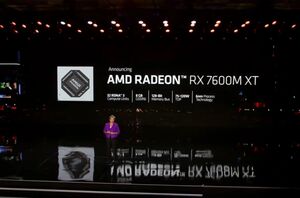
AMD Unveils Suite of New Radeon GPUs to Power High-Performance, Power-Efficient Gaming Laptops
"AMD Radeon RX 7000M Series Graphics deliver outstanding performance-per-watt, state-of-the-art visuals and high-framerate gaming, with 26% higher performance on average than previous generation; AMD Radeon RX 7000S Series Graphics redefine gaming performance for thin and light laptops LAS VEGAS, Jan. 04, 2023 (GLOBE NEWSWIRE) -- Today at CES 2023, AMD (NASDAQ: AMD) announced the AMD Radeon™ RX 7000 Series Graphics for Laptops. Built on the groundbreaking AMD RDNA™ 3 architecture, the new GPUs are designed to deliver exceptional energy efficiency and performance to power 1080p gaming at ultra settings and advanced content creation applications on next-generation premium laptops. The new GPUs expand the recently announced AMD Radeon RX 7000 Series Graphics family. The new AMD Radeon RX 7000M Series Graphics offer outstanding performance-per-watt while delivering state-of-the-art visuals and high-FPS gaming, while the new AMD Radeon RX 7000S Series Graphics maximize the efficiencies of AMD RDNA 3 architecture to deliver outstanding performance at low power levels ideally suited for thin and light laptops. AMD Radeon RX 7000 Series Graphics for Laptops offer up to 32 new unified compute units, 32MB of second-generation AMD Infinity Cache™ technology, 8GB of high-speed GDDR6 memory with up to a 128-bit memory interface, as well as dedicated AI and raytracing hardware. In addition, they support AI-accelerated video encoding and hardware-accelerated AV1 encoding1, AMD FidelityFX™ Super Resolution (FSR) and AMD Radeon Super Resolution (RSR) upscaling technologies, advanced AMD smart technologies, and other features that provide visually stunning, high-refresh rate gaming experiences." [...]

NXP’s New i.MX 95 Family of Applications Processors Delivers Safe, Secure and Scalable AI-enabled Edge Platforms
"CES -- NXP Semiconductors (NASDAQ: NXPI) today announced the i.MX 95 family, the newest addition to its i.MX 9 series of applications processors. The new i.MX 95 family combines high-performance compute, immersive Arm® MaliTM-powered 3D graphics, an innovative new NXP accelerator for machine learning, and high-speed data processing. Together, this technology enables advanced applications in automotive, industrial, networking, connectivity, advanced human machine interface (HMI), and more. Additionally, the i.MX 95 family delivers high performance safety and security features, developed in compliance with automotive ASIL-B and industrial SIL-2 functional safety standards and including an integrated EdgeLock® secure enclave. A critical requirement for the next wave of edge applications is advanced processing and machine learning capabilities, combined with high-speed connectivity, in order to better analyze the environment and make intelligent decisions locally. The i.MX 95 family is the first i.MX applications processor family to integrate NXP’s eIQ Neutron neural processing unit (NPU) and a new image signal processor (ISP) developed by NXP to help developers to build these powerful, next-generation edge platforms." [...]

Renesas Announces Its First Wi-Fi Development Kit with Support for New Matter Protocol
"IoT Leader Will Support Matter on All Future Wi-Fi, BLE and Thread Products Renesas Electronics Corporation (TSE: 6723), a premier supplier of advanced semiconductor solutions, today announced its first development kit that includes support for the new Matter protocol. Renesas also announced that it will offer Matter support on all future Wi-Fi, Bluetooth® Low-Energy (LE) and IEEE 802.15.4 (Thread) products, including products from recently acquired Dialog Semiconductor and Celeno Communications. The Matter protocol promises to solve the problem of interoperability for smart home devices. It securely and robustly connects various smart devices with each other across ecosystems, regardless of the manufacturer. Matter is an application layer protocol that abstracts the underlying connectivity technologies such as Wi-Fi, Thread and Bluetooth LE. By using a common software stack, device manufacturers who build with Matter will support various smart home ecosystems and voice services." [...]

Tipping Point: NVIDIA DRIVE Scales AI-Powered Transportation at CES 2023
"Foxconn to build electric vehicles on NVIDIA DRIVE Hyperion, Polestar unveils driver monitoring and more. Autonomous vehicle (AV) technology is heading to the mainstream. The NVIDIA DRIVE ecosystem showcased significant milestones toward widespread intelligent transportation at CES. Growth is occurring in vehicle deployment plans as well as AI solutions integrating further into the car. Foxconn joined the NVIDIA DRIVE ecosystem. The world’s largest technology manufacturer will produce electronic control units based on the NVIDIA DRIVE Orin systems-on-a-chip and build its electric vehicles using the NVIDIA DRIVE Hyperion platform." [...]

Samsung Advances New Era of Screens With Its New 2023 Neo QLED, MICRO LED and Samsung OLED Lineup, Boasting Powerful Performance, Secure Connectivity and Personalized Experiences
"Samsung Electronics today unveiled its new Neo QLED, MICRO LED and Samsung OLED lineups alongside lifestyle products and accessories ahead of CES® 2023. This year’s lineup features advanced, innovative products with a focus on enhanced connectivity and personalized consumer experiences. Samsung’s wide portfolio of offerings helps users build their own tailored experiences with the devices they use every day, with more intuitive technology than ever before. This year, Samsung takes one step further in its ever-evolving journey to simplify consumers’ everyday lives with seamless multi-device integration across its entire ecosystem through its smart home platform SmartThings. “In 2023, we are pushing boundaries of innovation to offer consumers more than just premium picture quality, but a holistic, premium device experience tailored to what they need and want out of their connected home,” said Cheolgi Kim, EVP of Visual Display Business at Samsung Electronics. “With SmartThings, our advanced technology is seamless and intuitive, making life more sustainable, accessible and enjoyable everyday.” Premium and Connected Experiences With Neo QLED Samsung’s latest suite of Neo QLED 8K and 4K televisions provide consumers with premium options that suit every need." [...]

Sony, Honda roll out prototype of 'Afeela' EV that uses Qualcomm tech
"Japan's Sony (6758.T) on Wednesday unveiled a prototype of the new "Afeela" electric vehicles it will build together with Honda (7267.T), saying it would harness its vast entertainment content as it looks to become a player in next-generation cars. Sony gave a glimpse of the Afeela, which sports rounded corners and a sleek black roof, at the CES 2023 technology trade show in Las Vegas. The car will use technology from hardware maker Qualcomm Inc (QCOM.O), including its "Snapdragon" digital chassis. Sony's long-awaited push into electric vehicles - it announced the venture with Honda in March - shows how manufacturers are increasingly focused on the cockpit experience in cars, which offers the potential to sell content via subscription services cars, especially as autonomous driving capabilities improve. "In order to realise intelligent mobility, continuous software updates and high-performance computing are required," Yashuhide Mizuno, the chief executive of Sony Honda Mobility, told the trade show. "To that end, we will work closely with Qualcomm."" [...]
Ciência e Tecnologia

Entire colour palette of inexpensive fluorescent dyes
"ETH researchers have developed a modular system for the simple and inexpensive production of security inks. It is based on polymers and could also be used in solar power plants and screens in the future. Novel fluorescent dyes developed by ETH researchers are relatively simple and inexpensive to produce. The dyes are polymers with a modular structure. They consist of a different number of subunits depending on their colour. The subunits used are chemically simple molecules that are either commercially available or can be produced by chemists in one reaction step." [...]

New Type of Entanglement Lets Scientists 'See' Inside Nuclei
"First-ever observation of quantum interference between dissimilar particles offers new approach for mapping distribution of gluons in atomic nuclei—and potentially more Nuclear physicists have found a new way to use the Relativistic Heavy Ion Collider (RHIC)—a particle collider at the U.S. Department of Energy’s (DOE) Brookhaven National Laboratory—to see the shape and details inside atomic nuclei. The method relies on particles of light that surround gold ions as they speed around the collider and a new type of quantum entanglement that’s never been seen before. Through a series of quantum fluctuations, the particles of light (a.k.a. photons) interact with gluons—gluelike particles that hold quarks together within the protons and neutrons of nuclei. Those interactions produce an intermediate particle that quickly decays into two differently charged “pions” (π). By measuring the velocity and angles at which these π+ and π- particles strike RHIC’s STAR detector, the scientists can backtrack to get crucial information about the photon—and use that to map out the arrangement of gluons within the nucleus with higher precision than ever before." [...]

James Webb Telescope Reveals Milky Way-like Galaxies in Young Universe
"New images from NASA’s James Webb Space Telescope (JWST) reveal for the first time galaxies with stellar bars — elongated features of stars stretching from the centers of galaxies into their outer disks — at a time when the universe was a mere 25% of its present age. The finding of so-called barred galaxies, similar to our Milky Way, this early in the universe will require astrophysicists to refine their theories of galaxy evolution. Prior to JWST, images from the Hubble Space Telescope had never detected bars at such young epochs. In a Hubble image, one galaxy, EGS-23205, is little more than a disk-shaped smudge, but in the corresponding JWST image taken this past summer, it’s a beautiful spiral galaxy with a clear stellar bar. “I took one look at these data, and I said, ‘We are dropping everything else!’” said Shardha Jogee, professor of astronomy at The University of Texas at Austin. “The bars hardly visible in Hubble data just popped out in the JWST image, showing the tremendous power of JWST to see the underlying structure in galaxies,” she said, describing data from the Cosmic Evolution Early Release Science Survey (CEERS), led by UT Austin professor, Steven Finkelstein." [...]
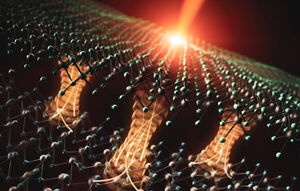
Electronic Bridge Allows Rapid Energy Sharing Between Semiconductors
"Researchers discover that electrons play a surprising role in heat transfer between layers of semiconductors, with implications for next-generation electronic devices. As semiconductor devices become ever smaller, researchers are exploring two-dimensional (2D) materials for potential applications in transistors and optoelectronics. Controlling the flow of electricity and heat through these materials is key to their functionality, but first we need to understand the details of those behaviors at atomic scales. Now, researchers have discovered that electrons play a surprising role in how energy is transferred between layers of 2D semiconductor materials tungsten diselenide (WSe2) and tungsten disulfide (WS2). Although the layers aren’t tightly bonded to one another, electrons provide a bridge between them that facilitates rapid heat transfer, the researchers found. “Our work shows that we need to go beyond the analogy of Lego blocks to understand stacks of disparate 2D materials, even though the layers aren’t strongly bonded to one another,” said Archana Raja, a scientist at the Department of Energy’s Lawrence Berkeley National Laboratory (Berkeley Lab), who led the study." [...]

Ultrasound technology helps with brewing better beer
"With the new year upon us, many beer lovers will be spreading the cheer at one of our great local brewpubs. As they hoist a tasty toast to new beginnings, not many revelers are likely to pause to ponder the effort that went into creating their brew. The ancient craft of brewing has benefited from high-tech advances over the years, and now ultrasound technology is stepping up to help brewers simplify clarification of the hoppy refreshment. Ultrasound is better at selecting out particular sediments from the mix than filters or centrifuges, allowing brewers to remove the larger particles while leaving behind those that boost a beer’s traditional character. The concept of membrane-free filtering came from a team of biofuels researchers at Los Alamos National Laboratory, who needed a way to remove water from soupy algae cultures. The microalgae, which are bred to be full of energy-dense hydrocarbons just like the liquid fuels used to power automobiles and airplanes, must be separated from their vast watery surroundings." [...]

Strengthening electron-triggered light emission
"A new method can produce a hundredfold increase in light emissions from a type of electron-photon coupling, which is key to electron microscopes and other technologies. The way electrons interact with photons of light is a key part of many modern technologies, from lasers to solar panels to LEDs. But the interaction is inherently a weak one because of a major mismatch in scale: A wavelength of visible light is about 1,000 times larger than an electron, so the way the two things affect each other is limited by that disparity. Now, researchers at MIT and elsewhere have come up with an innovative way to make much stronger interactions between photons and electrons possible, in the process producing a hundredfold increase in the emission of light from a phenomenon called Smith-Purcell radiation. The finding has potential implications for both commercial applications and fundamental scientific research, although it will require more years of research to make it practical. The findings are reported today in the journal Nature, in a paper by MIT postdocs Yi Yang (now an assistant professor at the University of Hong Kong) and Charles Roques-Carmes, MIT professors Marin Soljačić and John Joannopoulos, and five others at MIT, Harvard University, and Technion-Israel Institute of Technology." [...]
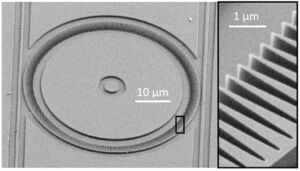
Two Light-Trapping Techniques Combine for the Best of Both Worlds
"Taming rays of light and bending them to your will is tricky business. Light travels fast and getting a good chunk of it to stay in one place for a long time requires a lot of skillful coaxing. But the benefits of learning how to hold a moonbeam (or, more likely, a laser beam) in your hand, or on a convenient chip, are enormous. Trapping and controlling light on a chip can enable better lasers, sensors that help self-driving cars “see,” the creation of quantum-entangled pairs of photons that can be used for secure communication, and fundamental studies of the basic interactions between light and atoms—just to name a few. Of all the moonbeam-holding chip technologies out there, two stand the tallest: the evocatively named whispering gallery mode microrings, which are easy to manufacture and can trap light of many colors very efficiently, and photonic crystals, which are much trickier to make and inject light into but are unrivaled in their ability to confine light of a particular color into a tiny space—resulting in a very large intensity of light for each confined photon. Recently, a team of researchers at JQI struck upon a clever way to combine whispering gallery modes and photonic crystals in one easily manufacturable device." [...]
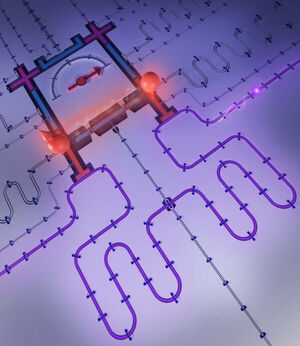
New quantum computing architecture could be used to connect large-scale devices
"Researchers have demonstrated directional photon emission, the first step toward extensible quantum interconnects. Quantum computers hold the promise of performing certain tasks that are intractable even on the world’s most powerful supercomputers. In the future, scientists anticipate using quantum computing to emulate materials systems, simulate quantum chemistry, and optimize hard tasks, with impacts potentially spanning finance to pharmaceuticals. However, realizing this promise requires resilient and extensible hardware. One challenge in building a large-scale quantum computer is that researchers must find an effective way to interconnect quantum information nodes — smaller-scale processing nodes separated across a computer chip. Because quantum computers are fundamentally different from classical computers, conventional techniques used to communicate electronic information do not directly translate to quantum devices." [...]
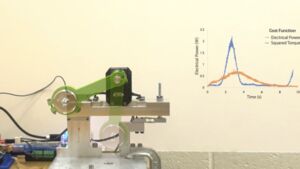
More energy-efficient robotic systems?
"An NYU Tandon team’s new mathematical model holds the key In every sector, sustainability and energy efficiency have become pressing concerns, and robotics is no exception. Until now, however, researchers seeking to predict the energy usage of robotic systems were forced to rely on a piecemeal method providing only rough approximations under limited conditions. That’s because while an actuator — the device that converts electrical energy into mechanical force and thus movement — is made up of multiple parts, current approaches look only at the motor itself, rather than considering the controllers that also factor in. “Existing power consumption models of actuators typically omit consideration of the switching power converter circuits required for directional, speed, or torque control, so we established a multi-domain framework for switched electromechanical dynamics,” NYU Tandon Associate Professor of Mechanical and Aerospace Engineering Joo H. Kim says of the work, which was recently published in Chaos. “The switched electromechanical dynamics of a servomotor is derived from the individual models of the internal DC motor, gear train, and H-bridge circuit. The coupled models comprehensively integrate all possible distinct switching configurations of on-state, off-state, and dead time.” As a result of the never-before-published model, roboticists will be able to accurately predict the power consumption of the actuator as a whole — and to effectively minimize that consumption." [...]

Earth-Sun Distance Sharply Alters Seasons in Tropical Pacific in a 22,000-Year Cycle
"New climate simulations show the annual change in the planet’s distance from the star also affects a seasonal cycle that impacts weather in North America and globally Weather and climate modelers understand pretty well how seasonal winds and ocean currents affect El Niño patterns in the eastern equatorial Pacific Ocean, impacting weather throughout the United States and worldwide. But new computer simulations show that the effect of the changing distance between Earth and the sun has gone unrecognized. The distance between the Earth and the sun varies during the year because of the planet’s slightly elliptical orbit. At its closest approach, Earth is about 3 million miles closer to the sun than at its farthest point. As a result, sunlight is about 7 percent more intense when Earth is closest to the sun. This slight variation in the Earth-Sun distance drives unexpected seasonal changes in climate, researchers say." [...]
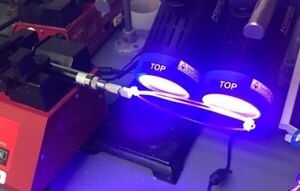
Lab lights way to simple chemical synthesis
"Rice lab photochemistry method eases manufacture of drug, chemical precursors Inexpensive iron salts are a key to simplifying the manufacture of essential precursors for drugs and other chemicals, according to scientists at Rice University. They’ve refined the process of producing diazides, building-block molecules in the production of drugs and agricultural chemicals. Iron salts along with processes called radical ligand transfer and ligand-to-metal charge transfer (LMCT) make it affordable and environmentally friendly. Rice synthetic chemist Julian West and co-lead authors Kang-Jie (Harry) Bian and Shih-Chieh Kao, both graduate students in his lab, report in Nature Communications that illuminating their reagents with visible light allows them to form diazides in conditions that are far more gentle than current industrial processes that usually involve high heat and corrosive acids. Diazides are molecules with two amine groups that can be functionalized, meaning they can easily react with other molecules. Depending on how they’re constructed, they can be the basis of many useful compounds." [...]
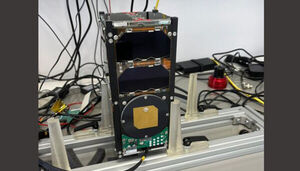
First Israeli Nanosatellite Designed to Communicate from Space with Optical Ground Station
"TAU-SAT3 was successfully launched yesterday. The researchers: "An important step toward demonstrating reliable quantum communication" A new technological achievement for Tel Aviv University: in less than two years TAU launched three nanosatellites into space. The third, TAU-SAT3, was launched yesterday on SpaceX's launch vehicle Falcon 9, from Cape Canaveral Space Force Station in Florida. According to the researchers, TAU-SAT3, developed at the TAU's Center for Nanosatellites and New Space of TAU's Iby and Aladar Fleischman Faculty of Engineering, represents a scientific breakthrough, paving the way toward demonstration of optical and quantum communication from space via nanosatellites. TAU Paves the Way - New Space & Nanosatellites The researchers: "TAU leads Israel's effort to create satellite communication channels based on optical and quantum technologies. To implement long-distance quantum communication over hundreds of kilometers or more we need to go into space." [...]

The history and mystery of Tangram, the children's puzzle game that harbours a mathematical paradox or two
"Tangram is accessible yet challenging, and an excellent educational tool. It’s still used in schools today to help illustrate mathematical concepts and develop mathematical thinking skills. Have you played the puzzle game Tangram? I remember, as a child, being fascinated by how just seven simple wooden triangles and other shapes could offer endless entertainment. Unlike LEGO, the Tangram pieces do not snap together, and unlike the pieces of a jigsaw puzzle, they do not form a painted picture. Instead, Tangram invites you to fit all the pieces together to form countless varieties of shapes." [...]

3D printing of single atom catalysts pioneered by research team for industrial chemical and energy applications
"A large international collaboration led by Prof Shizhang Qiao, an Australian Laureate Fellow at the University of Adelaide has developed a straightforward and cost-effective synthesizing approach using a 3D printing technique to produce single atom catalysts (SACs)—potentially paving the way for large scale commercial production with broad industrial applications. The research has been published in Nature Synthesis. The team mailed in samples to the Australian Synchrotron during COVID lockdown for materials characterisation using X-ray absorption spectroscopy (XAS) beamline. A catalyst is a substance that designed to drive a specific chemical reaction to convert chemicals to other, less harmful, valuable industrial products. The efficiency at which a given catalyst aides the reaction is often found to be determined by its surface area. For example, a bulk metallic cobalt foil may aid in chemical reductions, but the same number of cobalt atoms in the form of nanoparticles would be significantly more efficient given the greater surface area available for the reaction to take place." [...]

Improving the operational stability of perovskite solar cells
"Scientists at EPFL have found a way to improve the operational stability of perovskite solar cells, a crucial step towards their commercialization. Hybrid perovskites are materials made from metal halide frameworks interspersed with organic cations. They have attracted a lot of interest in the field of solar energy because of their light-harvesting capacity combined with a low cost of manufacturing, making perovskite solar cells (PSCs) prime candidates for replacing current silicon-based devices. Perovskites also show great potential in a range of applications that include LED lights, lasers, and photodetectors. One of the obstacles on the way to commercializing perovskite solar cells is their operational stability, which puts them at a disadvantage compared to photovoltaic technologies already on the market. This is especially a problem with mixed-halide perovskites, which are ideal materials for tandem solar cells and emission-tunable LEDs because they combine high compositional flexibility with optoelectronic performance." [...]
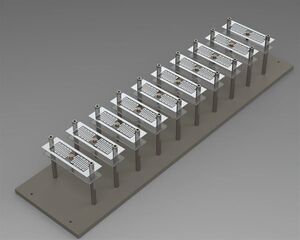
Researchers show a new way to induce useful defects using invisible material properties
"Much of modern electronic and computing technology is based on one idea: Add chemical impurities, or defects, to semiconductors to change their ability to conduct electricity. These altered materials are then combined in different ways to produce the devices that form the basis for digital computing, transistors, and diodes. Indeed, some quantum information technologies are based on a similar principle: adding defects and specific atoms within materials can produce qubits, the fundamental information storage units of quantum computing. Gaurav Bahl, professor of mechanical science and engineering at the University of Illinois Urbana-Champaign and member of the Illinois Quantum Information Sciences and Technology Center (IQUIST), is exploring how special non-linear properties in engineered materials can achieve similar functionalities without the need to add intentional defects. As his research group reports in their article “Self-Induced Dirac Boundary State and Digitization in a Nonlinear Resonator Chain,” published in Physical Review Letters, a metamaterial can change its functionality on its own depending on the power level of the input. A metamaterial is an artificial system that replicates the behavior of real materials made of natural atoms." [...]

SPORT and petitSat CubeSats to shed light on space weather disturbances
"Two CubeSats, or small satellites, are on a quest to provide insight on space weather disturbances and the subsequent impact on communication signals. The dynamic duo, the Plasma Enhancements in the Ionosphere-Thermosphere Satellite (petitSat) and Scintillation Prediction Observations Research Task (SPORT), arrived at the International Space Station on Nov. 27, 2022, as part of SpaceX’s 26th commercial resupply mission for NASA. Both CubeSats deployed from the space station on Dec. 29, 2022, at 8:55 a.m. EST. Scientists on both missions are most interested in studying a layer in Earth’s upper atmosphere known as the ionosphere. The ionosphere is where the impacts of space weather on our technology are felt most strongly. It's home to many satellites, including the International Space Station." [...]

Electrochemistry converts carbon to useful molecules
"A chemistry collaboration led to a creative way to put carbon dioxide to good – and even healthy – use: by incorporating it, via electrosynthesis, into a series of organic molecules that are vital to pharmaceutical development. In the process, the team made an innovative discovery. By changing the type of electrochemical reactor, they could produce two completely different products, both of which are useful in medicinal chemistry. The team’s paper, “Electrochemical Reactor Dictates Site Selectivity in N-Heteroarene Carboxylations,” published Jan 5 in Nature. The paper’s co-lead authors are postdoctoral researchers Peng Yu and Wen Zhang, and Guo-Quan Sun of Sichuan University in China. The Cornell team, led by Song Lin, professor of chemistry and chemical biology in the College of Arts and Sciences, has previously used the process of electrochemistry to stitch together simple carbon molecules and form complex compounds, eliminating the need for precious metals or other catalysts to promote the chemical reaction." [...]
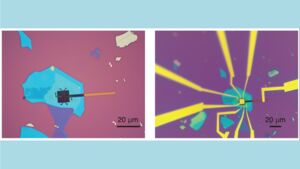
Superconductivity and Ferroelectricity Found in the Same 2D Material
"New research in Nature describes a unique quantum crystal that can behave as either a ferroelectric metal or a superconductor. When it comes to two-dimensional materials, it’s best to expect the unexpected. Writing in Nature, researchers at Columbia find evidence that two competing phenomena—superconductivity and ferroelectricity—can occur within the same material. “This is the first time that a tunable switch between ferroelectricity and superconductivity has ever been seen,” said corresponding author Daniel Rhodes. “We don’t fully understand it just yet, but it’s definitely there.” Rhodes, now an assistant professor at the University of Wisconsin, has a particular knack for growing high-quality crystals that can be peeled into atom-thin layers to explore the unusual properties that can arise in two dimensions. He started working on the material in question—MoTe2—as PhD student at Florida State." [...]
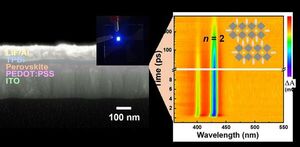
Into the blue: Progress in perovskite LEDs for deep-blue light
"Rapid crystallization method enables high-performance and spectrally stable deep-blue perovskite LEDs The deep blue of your LED display is likely produced by indium gallium nitride (InGaN), a costly substance. In the field of LEDs, researchers are seeking alternatives in a type of perovskite known as quasi-2D Ruddlesden‒Popper perovskites (2D-RPPs). 2D-RPPs have excellent optoelectronic properties – ideal for LEDs. Although 2D-RPP-based LEDs have rapidly progressed in terms of performance, it is still challenging to demonstrate blue-emissive and color-pure LEDs. Conventional fabrication processes for producing 2D-RPP films (e.g., hot-casting and antisolvent dripping) induce spatial segregation of the chemical species during the film crystallization. The resulting mixed perovskite phases evoke the emission from perovskite phase with a smaller bandgap, which hinders deep-blue emissions." [...]
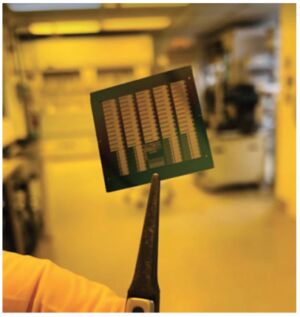
A better photon detector to advance quantum technology
"A team of researchers has developed an on-chip photon-counting device that could significantly advance numerous applications of quantum technology. The laboratory of Hong Tang, the Llewellyn West Jones, Jr. Professor of Electrical Engineering, Applied Physics & Physics, has developed the first realization of an on-chip photon-number-resolving (PNR) detector that can resolve up to 100 photons at a time. This detector shows its power in resolving the photon statistics of a light pulse. The results are published in Nature Photonics. Photon-number-resolving (PNR) detectors are considered the most desired technology for measuring light." [...]
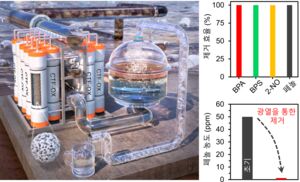
Water Pollution, a Major Environmental Contamination Issue, Solved by Developing Eco-friendly Materials Capable of Purifying Water at High Speed with Inexpensive Raw Materials!
"- DGIST Professor Park Chi-Young's team developed photothermal porous polymer capable of ultra-fast adsorption and removal of phenolic microplastics and VOC contaminants in water - Showing the potential as a next-generation water purification material made of inexpensive raw materials, and ultra-high removal efficiency through solar-based purification process - Selected as the cover paper for the 50th edition of ‘Advanced Materials,’ the most prestigious academic journal in the field of materials in 2022 DGIST (President: Kuk Yang) Department of Energy Science and Engineering Professor Park Chi-Young's team successfully developed an 'atypical porous polymer material' that can completely remove phenolic organic contaminants in water at ultra-high speeds. The porous material developed this time can efficiently remove not only microplastics in the water but also very small-sized VOCs based on photothermal effect. At the same time, it is expected to be utilized as a high-efficiency adsorption material that can be commercialized in the future as it has cost competitiveness based on raw materials and enables solar-based water purification process. Water pollution caused by the rapid development of the chemical industry is a representative problem in environmental pollution. Various water purification technologies and materials have been developed to solve this problem. Carbon-based porous materials using existing adsorption mechanisms have limitations in that the adsorption rate is slow and high thermal energy is required for recycling." [...]
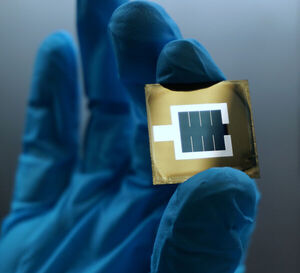
World record back at HZB: Tandem solar cell achieves 32.5 percent efficiency
"The current world record of tandem solar cells consisting of a silicon bottom cell and a perovskite top cell is once again at HZB. The new tandem solar cell converts 32.5 % of the incident solar radiation into electrical energy. The certifying institute European Solar Test Installation (ESTI) in Italy measured the tandem cell and officially confirmed this value which is also included in the NREL chart of solar cell technologies, maintained by the National Renewable Energy Lab, USA. Scientists from HZB could significantly improve on the efficiency of perovskite/silicon tandem solar cells. "This is a really big leap forward that we didn't foresee a few months ago. All the teams involved at HZB, especially the PV Competence Center (PVComB) and the HySPRINT Innovation lab teams have worked together successfully and with passion," says Prof. Steve Albrecht." [...]
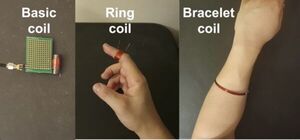
Next-generation wireless technology may leverage on the human body for energy
"While you may be just starting to reap the advantages of 5G wireless technology, researchers throughout the world are already working hard on the future: 6G. One of the most promising breakthroughs in 6G telecommunications is the possibility of Visible Light Communication (VLC), which is like a wireless version of fiberoptics, using flashes of light to transmit information. Now, a team of researchers at the University of Massachusetts Amherst has announced that they have invented a low-cost, innovative way to harvest the waste energy from VLC by using the human body as an antenna. This waste energy can be recycled to power an array of wearable devices, or even, perhaps, larger electronics. “VLC is quite simple and interesting,” says Jie Xiong, professor of information and computer sciences at UMass Amherst and the paper’s senior author. “Instead of using radio signals to send information wirelessly, it uses the light from LEDs that can turn on and off, up to one million times per second.” Part of the appeal of VLC is that the infrastructure is already everywhere—our homes, vehicles, streetlights and offices are all lit by LED bulbs, which could also be transmitting data." [...]
Documentação
A documentação é parte essencial do processo de aprendizagem e a Internet além de artigos interessantes de explorar também tem alguma documentação em formato PDF interessante de ler. Todos os links aqui apresentados são para conteúdo disponibilizado livremente pelo editor do livro.

PCB Design Tutorial
"You've designed your circuit, perhaps even bread boarded a working prototype, and now it's time to turn it into a nice Printed Circuit Board (PCB) design. For some designers, the PCB design will be a natural and easy extension of the design process. But for many others the process of designing and laying out a PCB can be a very daunting task. There are even very experienced circuit designers who know very little about PCB design, and as such leave it up to the "expert" specialist PCB designers. Many companies even have their own dedicated PCB design departments. This is not surprising, considering that it often takes a great deal of knowledge and talent to position hundreds of components and thousands of tracks into an intricate (some say artistic) design that meets a whole host of physical and electrical requirements." [...]
Projetos Maker
Diversos Projetos interessantes.

Inside the 8086 processor's instruction prefetch circuitry
"The groundbreaking 8086 microprocessor was introduced by Intel in 1978 and led to the x86 architecture that still dominates desktop and server computing. One way that the 8086 increased performance was by prefetching: the processor fetches instructions from memory before they are needed, so the processor can execute them without waiting on the (relatively slow) memory. I've been reverse-engineering the 8086 from die photos and this blog post discusses what I've uncovered about the prefetch circuitry. The 8086 was introduced at an interesting point in microprocessor history, where memory was becoming slower than the CPU. For the first microprocessors, the speed of the CPU and the speed of memory were comparable.1 However, as processors became faster, the speed of memory failed to keep up. The 8086 was probably the first microprocessor to prefetch instructions to improve performance." [...]

FakePGA
"Simulating Verilog designs on a microcontroller What does it do? This project aims to simulate Verilog HDL designs on a Raspberry Pi Pico (or any other RP2040-based board). It achieves this by using Verilator to compile the RTL into a cycle-accurate C++ model of your design which can then be executed on the microcontroller. This allows you to access the signals of the simulated design through the GPIO pins of the board, which gives a more hands-on experience than simulating on a computer. It is many orders of magnitude slower than a real FPGA (max clock speed is 5kHz, and it goes down as the complexity of your design increases), but it can still be used as an educational tool. In terms of user experience, it feels like using a slower FPGA (at least for simpler designs), hence the name of the project: FakePGA." [...]
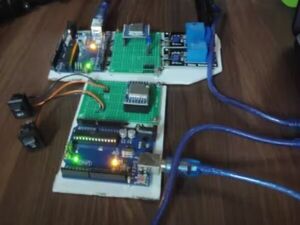
How To Use LoRa_02 With Arduino
"Hi, friends ! This time I got an interesting combination of Relay + Arduino uno. We will use LoRa_02 to receive messages via LoRa - And to display received messages in our applicationArduino uno is one of the simplest boards and easy to use with built-in WiFi, which can be programmed from the Arduino IDE with several additional. - platforms with applications that can be easily connected to IoT devices using simple libraries. - LoRa is a Long Range technology that has a long transmission range and consumes less power. - The combination of these three technologies can be used to develop excellent projects." [...]

Home automation using Google firebase and NodeMCU
"As we know IOT plays a very important role in our upcoming style of living. We will control and monitor our garage door, garden watering, garden light system, feed our pet, etc… from a remote location which miles away from the destination. In this case, the internet will be our connecting medium. So, using the internet and giving connectivity of internet to our things we can monitor or can control from anywhere in the world. For complete source code and all the documents click. In this project, we will control the home appliances which are connected to the relay system using an android app and NodeMCU." [...]

How to Make Pocket GPS with GPS Neo-6M and ESP32
"Simple project w/ GPS Neo-6m and ESP32 in this project, with the help of GPS Neo-6M, We receive and display the values of Altitude, Latitude, Longitude, and Speed. also using TFT LCD I created a beautiful user interface for it. Features Display the Values of: - Altitude - Latitude, Longitude - Speed - Number of Satellite Getting Started We use st7735 Tft Lcd with ESP32. Also, I used a GPS Neo-6m in order to receive the GPS values. - GPS Neo-6M - TFT Lcd st7735 - ESP32" [...]

Automate environment management prevent lightnings damage
"Control energy flow during lightning storms, take a quite weekend this time, automate safety of environment. The rush to realize this project and final board came from the Co designer project with Seeed Studio concerning the Grove-AS3935Lightning-sensor. Well the sensor was designed and works very fine, but what about something practical to use it in a very proficuous way? How to demonstrate the high potential of this sensor trough a project ? So I remember a problem, a shared problem I think. Anytime there is a storm with lightnings I must remember to detach telephone line, internet, computer supply, TV set supply and more otherwise they will be (higlhy) probably damaged." [...]
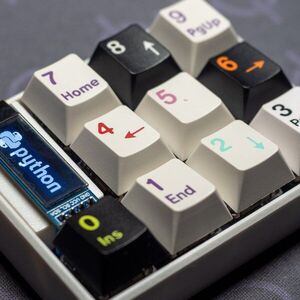
Keyboard as a Python Code
"A keyboard designed by python only. Python is one of the best programming languages. It can do everything. So I have designed the entire keyboard, including the PCB, case, and firmware, using only Python. No need to use Kicad and Fusion360. It is explained on Jupyter Notebook(Google Colaboratory or binder), and you can customize it to make your own keyboard." [...]

Radio Alarm Clock - Full build Tutorial (open source)
"Even if you're a beginner you'll be able to build this COOL Radio Alarm Clock loaded with useful features. This is a project I designed and built from scratch. The Software and Hardware are provided as Open Source. There may be bugs or issues I will correct or redesign. You may use, modify and distribute both software and hardware as long as you give credit. With a little bit of work and dedication, you will be able to build this." [...]

AI08 Devboard
"A devboard for SAM&WING AI08 8-Channel Capacitive Touch Controller IC Back in September 2022, I found a category on LCSC about capacitive touch controllers. The touch controller chips come in all sizes (single input to many) and types (I2C, parallel output, etc.) and is a useful chip if you need to add touch support for your projects, so I want to try out one of them, the SAM&WING AI08. (From their website the company name is actually Xiamen Xinwang Electronic Technology. LCSC can be weird sometimes.) The AI08 is an 8-channel capacitive touch controller." [...]
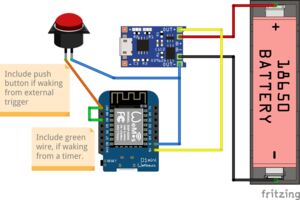
Quick and dirty guide to Lithium battery-powered Wemos D1 Mini
"The Wemos D1 Mini is an ESP8266 based prototyping board with WiFi connectivity and countless applications. It becomes even more useful in battery-powered applications, where with the proper setup, it can run low-powered for months at a time — or only hours if done incorrectly. This is the quick and dirty guide to running a Wemos D1 Mini powered by Lithium-Ion batteries: We will be blatantly ignoring several design specifications, so double check everything before using in a critical project. Several things will vary, and since there is plenty of clones of the board some boards will work better than others. Warning: Lithium-Ion batteries always command healthy respect, due to the energy they store! Do not use bad cells, and do not leave batteries unattended in places where a fire can develop, especially while charging." [...]

Logic Gate Game
"This Digital Logic Gate Game was my final submission for the STEM Projects / EET-066 class I took at Lake Land College (LLC | Mattoon, IL) in the Spring of 2022; I called it "Name! That! Gate!" Industrial Computer Programming was the primary focus of my Applied Engineering (AAS.MECH) studies at LLC and, in the last semester working towards that for my STEM Projects class, I wanted to create something that focused on Digital Logic (heavily emphasized in AAS.MECH at LLC) and also included as much of everything else I learned along the way: electrical circuitry & wiring, schematic drafting, microcontroller programming, and 3D modeling & printing. "Name! That!" [...]
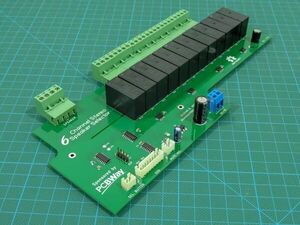
6-Channel Speaker Selector
"A DIY six-channel stereo speaker selector to share a pair of speakers between six stereo audio systems. This project is a DIY six-channel stereo speaker selector based on STC15W201 MCU. The purpose of this electronic switch is to share a pair of speakers between six stereo audio systems. This is an improved and low-cost version of the 6-channel speaker selector which we developed a few years ago. This new speaker selector uses STC15W201 MCU. This MCU is a low-cost 8051 MCU designed by STC micro." [...]
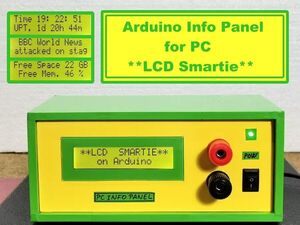
Arduino LCD Info panel for PC (LCD Smartie)
"This is a simple way to control 16x2 LCD Display via Windows PC software. Тhis time I will present you a simple way to control 16x2 LCD Display via Windows PC software. For this purpose, we use an Arduino microcontroller, which in this case has the function of an interface between the Display and the USB port of the Computer. Also the LCD display can be controlled directly through the LPT port, but nowadays that port is no longer used and has been replaced by USB. I use Open Source software for Windows LCD Smartie that you can use to show lots of different types of information on your LCD or VFD. The program has built in support for many systems statistics (i.e." [...]
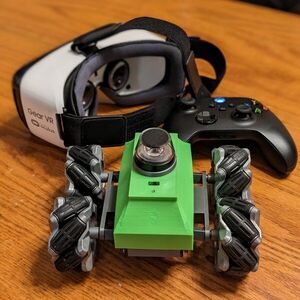
PanoBot
"360 degree panoramic video on an omnidirectional chasis, controlled in VR. This project uses a cheap esp32cam board, fancy optics and a hacked toy to create an immersive telepresence robot controlled in a virtual reality user interface or 2D touch controls. A little background... Around the year 2000, I came across CMU's Palm Pilot Robot Kit, a really cool looking omni-directional robot driven by a palm pilot. It was mind blowing to a middle schooler and a little beyond my means. About the same time, there was a fad around Quicktime QTVR panoramas, and newfangled immersive videos thanks to fancy optics and a little trig on a computer powerful enough. My pubescent brain wanted to put the two together for a telepresence robot." [...]

CWX-2 ESP8266 BME280 Compact Weather Station D1
"Powered by a single CR123 Lithium battery (or external 3V3 DC or USB), this CWX SDK is a Compact Weather Station for IoT Home Automation. Following various interest to additionally offer an 'upgrade' to the original CWX-1, so including Wemos D1 Flashing capability, 3V3 LDO and Battery Voltage Monitoring, the CWX-2 has now been released, and in two flavours!. CWX-2 is a Compact IoT Weather Station board, based on an ESP8266, which interfaces to a BME280 Weather Sensor and SFH2440 Ambient Light sensor. This board is designed to interface any Home Automation System. - Designed to be battery powered, via a standard CR123A Lithium Battery, or from an external DC supply. - Allows remote sensing and sending data over Wi-Fi, such as to Domoticz or another Home Automation system." [...]

ESP8266-Websockets-LED
"Control an addressable LED strip with an ESP8266 via a Web browser. The project is an easy way to start managing your address LED strip. The address strip is managed directly from the browser. No page reloads, communication is only via websockets, which means the status of the strip will change immediately. Also, all connected devices in your ESP8266 will be synchronized. The project uses a minimum of dependencies, so the probability that something will break is much lower." [...]

Portami
"Battery-powered polyphonic synth designed to be a companion to small Midi keyboards. Portami is a portable, battery-powered polyphonic synth built around a SAMD21 microcontroller. It's designed to be a companion to small Midi keyboards. The software is a fork of Marcel Licence's excellent code: https://github.com/marcel-licence/samd21_mini_synth My implementation focuses on USB Midi communication (Midi-in through the onboard USB-C port) and features a push button to cycle between wave types (sine, saw, square, pulse, triangle, and noise). An RGB led inside the button changes color according to the current wave type. Other than the onboard speaker driven by an LM386 amplifier, Portami has a 3.5" mini-jack port to plug a pair of headphones." [...]

I2S output FM Tuner with RDS
"I2S(Inter-IC Sound) output FM tuner using ESP-01 with RDS and IR remote control. 100% pure digital music output at upto 48ksps. Enjoy! ompared to yesterday, more and more things are moving towards digital! If the FM tuner is capable of delivering 100% pure digital music then why we need to restrict ourselves still listening in Analog? Let's go digital!" [...]

Ball Balancing Robot
"In this instructable, I'll show you step-by-step how I created a ball-balancing robot. More formally known as a Stewart platform, this robot has 6DOF robot is omni-rotational and omni-translational. With the addition of a camera, this Stewart platform can be transformed into a robot that prevents a ball from falling. Let's begin! Tools - needle nose pliers - wire cutters - wire strippers - 2.5mm allen wrench - soldering iron and solder - exacto knife - hot glue gun and hot glue Electronics ($400) - JX CLS6336HV 35kg digital servo (x6) - Teensy 4.1 - 6 channel Polulu Maestro servo controller - Pixy2 Camera - 3.3 to 5v logic level converter - half proto board + screw terminal - SPST switch - 18 AWG wire - XT60H connector pair - 2S (7.4v) 6200mah lipo battery Other supplies ($83) - 25T servo disc (x 6) - m3 x 120mm pushrod connector (x6) - 22mm long m3 tie rod (x12) - m3 x 6mm threaded inserts (x36) - m3 x 10mm standoffs (x3) - m3 x 5mm standoffs (x14) - m3 locknuts (x24) - 3/4 x 48-inch wooden dowel - #6 x 1-1/4 inch wood screws (x4) - M3 Screws" [...]
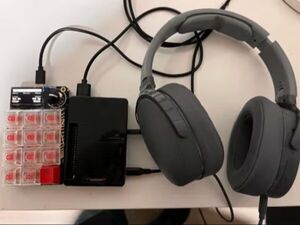
The MacroPad Jukebox
"MacroPad RP2040 + Raspberry Pi + some code = Rock and Roll. A severely over-engineered music player Lately, I've been obsessed with the old way of listening to music. You know: from your own collection, in order, one album at a time. No randomness, no infinite playlists, no album of the day, no ads, and no algorithms. When I got my hands on an Adafruit MacroPad RP2040 I knew what I had to do: make my own ugly and over-engineered music player. I present to you the "MacroPad Jukebox"." [...]

The Game Boy DMG Color (DMGC)
"Well, it finally seems that I’ve arrived at the conclusion of my DMG Color journey! My last attempt to fit a Game Boy Color inside of an original Game Boy (DMG) case was ultimately successful, but it was quite unorthodox. Cutting up the PCB and wiring everything manually was a huge task, and it came with some challenges to overcome as well. Not to mention, screwing the two halves back together without pinching any wires is a huge pain and something I don’t take any joy in doing, which is why it hasn’t been opened again since I finished the build. But, it had all the features I wanted to put into it, and I’ve already put many hours of playtime into it. But, every time I play it, I noticed how much lighter the actual console is – the LiPo inside wasn’t as heavy as the 4x AA batteries." [...]
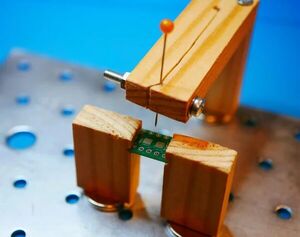
SMD and PCB Holder
"A PCB holder made from wood. Magnetical PCB clamps and SMD part fixing clamp. Supplies Parts - 2x Wood Block 10x20x30 mm - 1x Wood Block 10x20x40 mm - 1x Wood Block 10x20x60 mm - 3x Ring Magnet with wood screws - Two wood screws for the SMD fixing clamp - Needle for the SMD fixing clamp - M3 Screw with Washers and Nut to fix the needle - Metal plate Tools - Triangular Rasp - Wood Saw / Fret Saw - Drilling Machine" [...]

Ring in the New Year with an XMC based Mechanical Display
"Check out how you can use the famous XMC4700 to make a mechanical 7 Segment Display! 0 Greetings! First of all, the idea to create a 7 Segment Display this way was inspired by MichaelKlements (click to watch the video on his YouTube channel). Greetings, fellow makers and tech enthusiasts! Are you ready to ring in the new year with a thrilling project that combines Infineon's XMC4700 Relax Kit, servo motors, and 3D-printed parts? Then buckle up and get ready to build a mechanical 7-segment display that will add a touch of sparkle and fun to your celebrations." [...]
Secção Videos
Videos interessantes.
That's all Folks!



